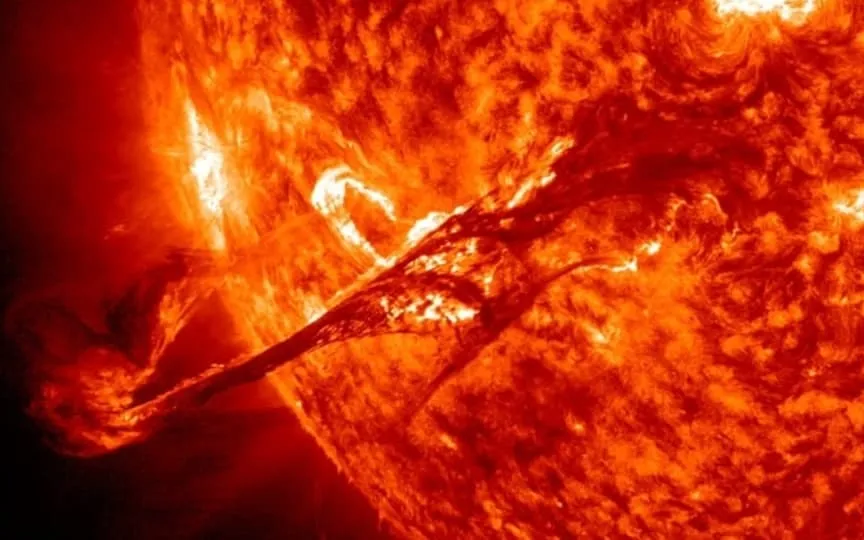Solar storm warning: Coronal Mass Ejection expected to trigger Geomagnetic storm, possibility of stunning auroras
Solar storm warning: A significant Coronal Mass Ejection (CME) was observed on the Sun’s surface on March 17. The CME is currently heading towards Earth and may result in a geomagnetic storm, posing a potential risk of a solar storm. This event follows closely after a recent CME passed by Earth, causing a minor G1-class geomagnetic storm. Stay informed about this solar storm alert.
Solar storm warning
According to a SpaceWeather report, NASA’s Solar Dynamics Observatory recorded a massive eruption on the sun’s surface that ejected the CME. This CME is called the “Canyon of Fire”. The space agency has modeled the data and revealed that this solar storm cloud is now approaching Earth. As a result, forecasters have issued a solar storm warning as this CME is now expected to graze the Earth’s magnetic field on March 20 and could trigger a G1 geomagnetic storm.
In addition, the report suggests that this geomagnetic storm may cause auroras at high latitudes, especially on the first night of northern spring.
The report states that “Yesterday’s ‘canyon of fire’ CME (pictured below) may have covered our planet’s magnetic field on March 20. If so, the timing would be perfect for equinox auroras. At this time of year, even a glancing blow from a CME can cause geomagnetic storms in the spring Russell-McPherron thanks to the phenomenon.
This effect comes at a time when the Russell-McPherron Effect is at play. During this period, even small solar winds can cause geomagnetic storms. But why does this happen?
About the Russell-McPherron effect
The vernal equinox has now arrived, which is why the Russell-McPherron effect has now come into play. During this period, the Sun is directly above the equator, when day and night are of equal length. Along with this, a semi-annual variation in the effective southern component of the interplanetary field is also observed. This causes cracks in the Earth’s magnetic field, through which even weak solar winds can penetrate and trigger solar storms.




